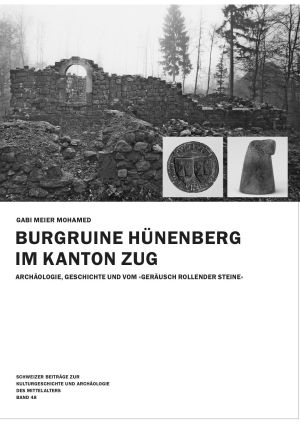Doswald, Stephen
Burgruine Hünenberg im Kanton Zug: Archäologie, Geschichte und vom «Geräusch rollender Steine»
A listed monument since 1962, the ruined castle at Hünenberg is one of the most important monuments of medieval cultural history in Canton Zug. The castle was built as early as 1100. Elaborately worked building blocks, colourfully painted exterior render and precious objects suggest that those who built it were members of the high nobility. The castle was later acquired by the Lords of Hünenberg, who over the course of the 13th and 14th centuries advanced their position to become one of the leading families of the minor nobility in the region. The most recent archaeological excavations, mounted over several short periods between 2005 and 2010, were the first to take advantage of modern scientific methods to examine a medieval castle site. The results of the analyses yielded surprising new insight into the castle’s history of construction and the lives of its former inhabitants.
Die Burg Zug: Archäologie – Baugeschichte – Restaurierung
During its 800-year existence, Zug Castle went through many changes. Construction of a large section of the architectural complex still in existence today began in the 12th century. Built originally as a manorial seat, it evolved into a residence in the Late Middle Ages and eventually became an historical museum in the 20th century.
Between 1967 and 1982, archaeological excavations took place in the castle grounds and an extensive architectural survey of the building itself was also carried out. Post-excavation work painted a surprisingly detailed picture of this extraordinary building, the importance of which radiated beyond the boundaries of Canton Zug. The main themes of the publication include the results from the excavations and architectural surveys as well as the archaeological finds recovered. Other topics are the restoration of the building and the exhibition concept of the “Museum at the Castle”.








